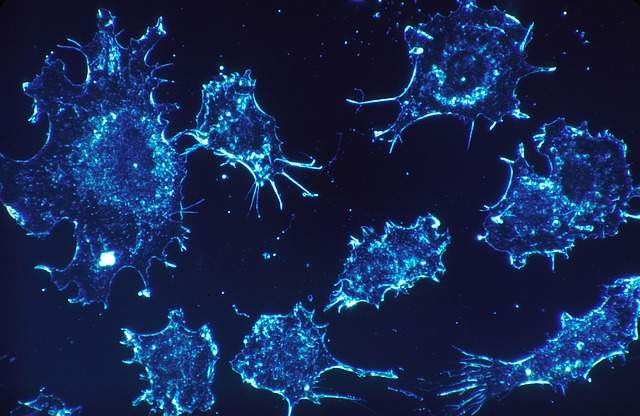
Researchers from the Institute of Cancer Research in London have identified a mutation in cancer cells that makes them resistant to PARP inhibitors such as olaparib.
Using CRISPR-Cas9 gene editing methods, the team identified a mutation in the PARP1 protein that decreases the efficacy of PARP inhibitors.
PARP1 is integral to the repair of damaged DNA, and is a primary target for PARP inhibitors such as olaparib, which prevent PARP1 from repairing damaged cancer cells. Patients who already have a weakness in DNA repair due to inherited errors in the BRCA genes are particularly susceptible to these types of drugs.
The team created mutations in small, targeted sections of the PARP-1 gene, marking the mutated protein with a fluorescent colour so it could be tracked. This allowed researchers to perceive the effect of mutations on PARP1 and on the sensitivity of cancer cells to PARP inhibitors such as olaparib and talazoparib.
The study identified specific PARP1 mutations which inhibit the protein’s ability to bind to DNA, meaning PARP inhibitors can no longer locate and attack them at the source of DNA damage.
The findings could help doctors predict which patients would find PARP inhibitors ineffective, and alter treatment courses accordingly. This would further personalise an already targeted therapy, allowing treatment to follow patients’ individual needs and reactions.
How well do you really know your competitors?
Access the most comprehensive Company Profiles on the market, powered by GlobalData. Save hours of research. Gain competitive edge.

Thank you!
Your download email will arrive shortly
Not ready to buy yet? Download a free sample
We are confident about the unique quality of our Company Profiles. However, we want you to make the most beneficial decision for your business, so we offer a free sample that you can download by submitting the below form
By GlobalData“PARP inhibitors are hugely exciting new drugs which are especially effective in women with BRCA mutations – but unfortunately as with many other treatments, it is common for cancer cells to eventually develop resistance,” study author Dr Stephen Pettitt said.
“Our study has discovered one of the reasons why resistance to PARP inhibitors such as olaparib might occur. Testing for the mutations we have identified could offer even more personalised treatment for women with breast and ovarian cancer, by allowing doctors to judge whether and for how long olaparib should be used.”
Contrary to the researchers’ original predictions, they found cancer cells with certain BRCA1 mutations survived the loss of PARP1 DNA repair function, implying their resistance to PARP inhibitors. It is thought that, in these instances, some capacity to repair DNA remained in the BRCA1 gene despite the loss of PARP1.
Further research is planned to examine a wider range of PARP1 mutations in patients, using the same gene editing method.
“The evolution of cancers into drug-resistant forms is a major challenge we face in getting cancer treatments to work,” study leader professor Chris Lord said.
“Studies like this can tell us how and why drug resistance occurs, and give us new ways of predicting the likely response to new-style targeted drugs.
“We hope our research will help doctors use the best drug right from the outset, respond quickly to early signs of resistance, and work out the best ways to combine treatments to overcome drug resistance.”
The research was funded by Cancer Research UK and Breast Cancer Now, with findings published in the journal Nature Communications.
Olaparib is currently available for ovarian cancer patients with inherited BRCA mutations, and is currently under evaluation as a treatment for breast cancer. It is the first approved cancer drug that targets an inherited genetic mutation.







